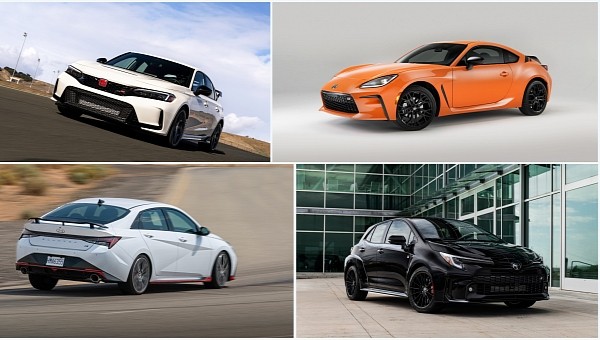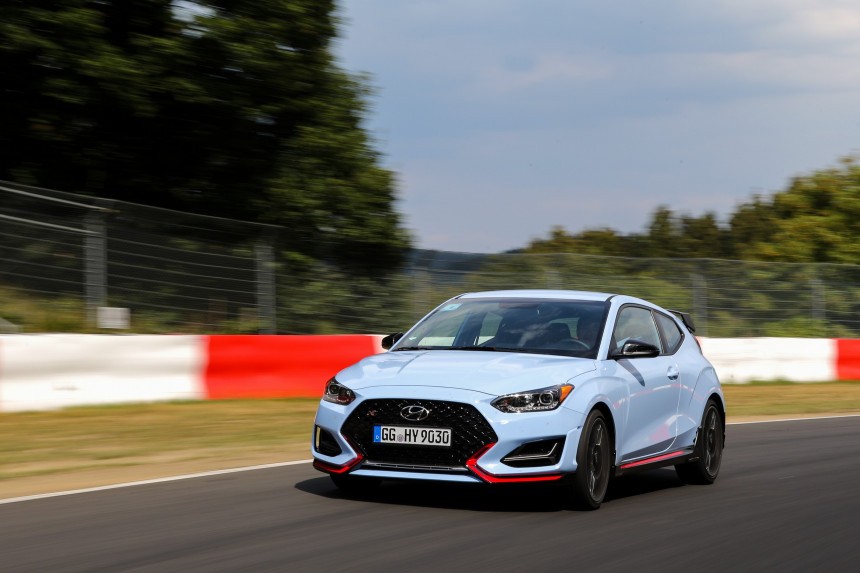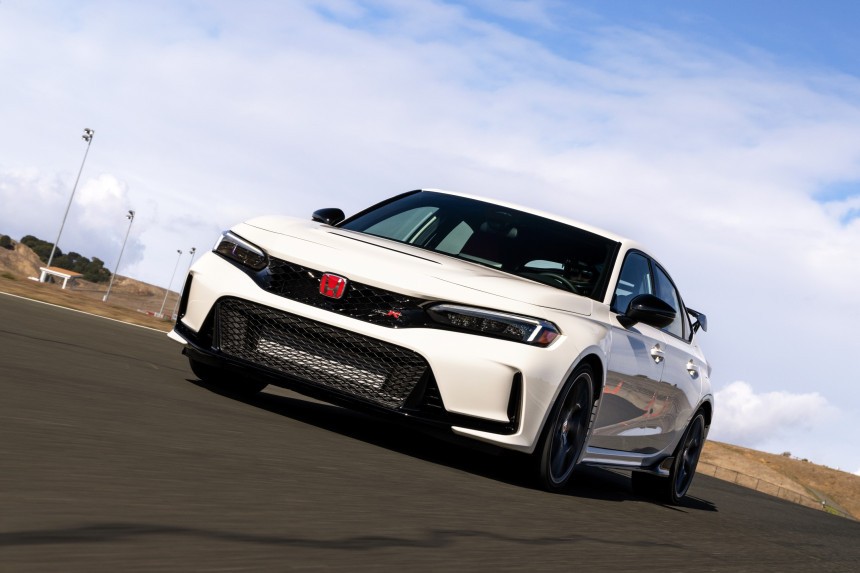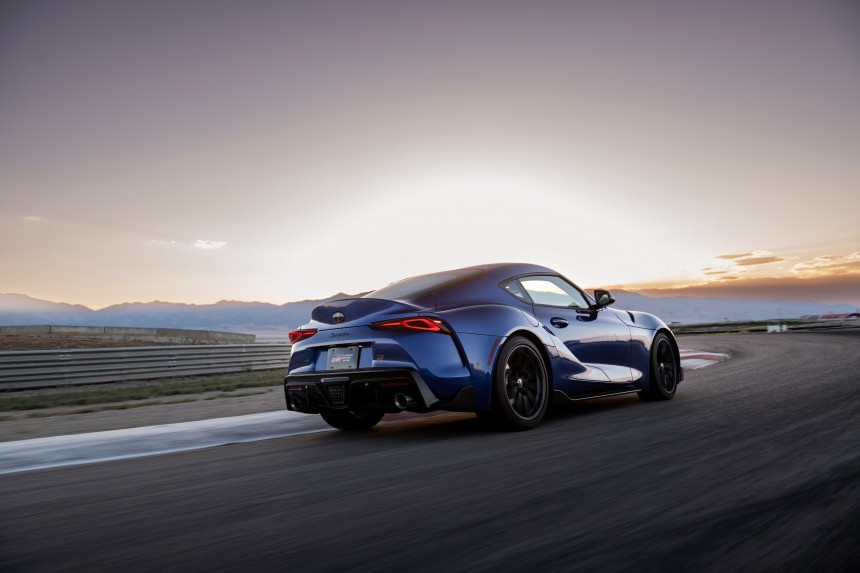If you hadn’t noticed, there have been serious performance cars coming out of Asia within the last decade. The Toyota GR 86, the Supra, the Civic Type R, the Subaru BRZ, and more are all incredible driver’s cars. More to the point, they seem to consistently be almost exactly what enthusiasts are asking for – they’re light(ish), have manual transmissions, and intriguing powertrains paired with killer driving dynamics. So, when did this start? Who is to thank for this? How long will it last, now, with electrification looming? I’m going to attempt to answer those questions.
A Renaissance in Japan
Let’s start from the beginning. You could argue this whole thing traces back to the Toyota FT-1 concept and circumstances in the Asian auto market at that time. As a quick refresher, that 2014 concept was, at the time, rumored to be the brand’s answer to the new Acura NSX – another rough starting point for this JDM and Asian sports car renaissance. This, as you well know, eventually became the Supra. To boot, a global recession was coming to a close.
Over at Toyota, plans are being laid for what would become the Supra, and an important strategy that has made so much of this possible is being developed. I am, of course, talking about the concept of rebadging between brands. Toyota and Subaru did and still do this with the 86 and BRZ. The move was clearly the inspiration for the deal struck with BMW to craft the new Z4 and Supra duo.
At Nissan HQ, however, things look a little different. After much-discussed CEO Carlos Ghosn fought so hard to keep Nissan’s sports cars alive, the Z becomes stagnant – as does the GT-R. Only later would this change, and only for one of these cars.
This isn’t to say there were no other Japanese or Asian sports cars out at the time that were very good. The WRX/STI lineup was arguably reaching its peak at this time, with a new generation Impreza on the way. The Toyobaru twins were up and running around this time as well.
Meanwhile, Honda was laying plans for the Type R’s arrival in America with the next generation Civic, and the existing Civic Si was a throwback to Hondas of old. If there’s a hard date to pin all this on, it is 2014. A year later, Albert Biermann, legendary head of BMW M for 31 years, leaves the company to set up shop at Hyundai.
As it happens, Biermann is one of the people we have to thank for the recent resurgence of performance cars from across the Pacific. The man is a gearhead through and through, and helped build some of the best-driving sports cars BMW has ever made (arguably the best depending on who you ask). These include the E46 M3, 1M, and E39 M5. But Biermann is only part of our story.
Over at Toyota, another central figure is pushing things along for enthusiasts. CEO Akio Toyoda is car person’s car person. He races despite running one of the most successful companies on the planet and regularly advocates for Toyota’s strategy of incremental improvement across its models. Later, “Morizo,” as he was called while behind the wheel, would go on to help launch Gazoo Racing’s street car program after unprecedented success at Le Mans. Hell, Toyota’s recent performance offerings alone constitute a JDM renaissance. The GR Supra, 86, and Corolla are all here because of Toyoda, and more importantly, they all drive really, really well.
These two figures, along with the cars they helped bring to market, are squarely to thank for the recent rash of performance cars we’ve seen from Japan and Korea. I believe that this, combined with the age of the Z platform, is what pushed Nissan to update the Z rather than kill what was a very poorly performing sports car.
Putting these human figures in our story aside, there is another very important reason for the resurgence of performance cars out of Asia. Nostalgia. Grand Turismo on a CRT TV is why we have these cars in 2023.
All of the cars we’ve discussed have to sell at the end of the day. Toyota used the Supra name to sell its new sports car. Honda brought its most iconic badge over to America for the same reason - nostalgia can be directly linked to cashflow at any point in history. These cars are all tremendously in-demand because of that (their particular driving ethos’ aside).
At the start of this, I asked how long this rash of affordable Asian performance cars would last. Frankly, I don’t think it’ll last very long. This period I’ve discussed has already made it almost a whole decade. Japanese brands, in particular, have a reputation for moving slowly, and that’s a big part of why these cars exist and have existed for so long. The Japanese call it Kaizen - the idea that steady improvement, even by a single percentage point, every day will lead to success in business. The trade-off is that changes can be slow to occur. For evidence, merely look at the Japanese reaction to EVs.
Toyota is now notorious for its stance on EVs, in that the brand thinks hybrids and alternative fuels are a more viable solution to the climate crisis. Honda is in largely the same boat here, though it has already said the FL9 Type R will be the last purely ICE Type R, and it has an EV on the way as well.
Subaru, Hyundai/Genesis, and Nissan are all pushing EVs now too, and we see that through either stagnation or outright death of some of each brand’s performance cars. The Z is an outlier here, but the GT-R hasn’t made meaningful changes in ages. Over at Subaru, the STI is dead. I think the WRX is next unless this new generation sells like hell.
Even at the once-promising Hyundai N division, the Veloster N is dead, and instead, Hyundai wants to focus on electrified performance cars. The Elantra N can’t be far behind it, and the Kona N is really just a lifted Veloster which happens to be quite ugly.
Realistically, Toyota is carrying the torch here. But for how much longer? The bz4X is frankly a huge disappointment as far as EVs are concerned. And it’s not like the Mirai’s hydrogen-powered outlook will magically become viable overnight. So, while we have these performance cars, unless these brands find a balance between their new, greener projects and pleasing an enthusiast demographic, we’re going to end up with a lot more Kona Ns than Type Rs.
That still leaves us with a good run of cars from 2014 until now to choose from. More importantly, many of these will depreciate quite heavily. I personally cannot wait for the $19,000 2022 Honda Civic Si. These cars really are a renaissance, and they are instrumental in inspiring the next generation of car enthusiasts. Without these cars being made now, today, this generation would not go on to make the Civic Type Rs of tomorrow.
Let’s start from the beginning. You could argue this whole thing traces back to the Toyota FT-1 concept and circumstances in the Asian auto market at that time. As a quick refresher, that 2014 concept was, at the time, rumored to be the brand’s answer to the new Acura NSX – another rough starting point for this JDM and Asian sports car renaissance. This, as you well know, eventually became the Supra. To boot, a global recession was coming to a close.
Over at Toyota, plans are being laid for what would become the Supra, and an important strategy that has made so much of this possible is being developed. I am, of course, talking about the concept of rebadging between brands. Toyota and Subaru did and still do this with the 86 and BRZ. The move was clearly the inspiration for the deal struck with BMW to craft the new Z4 and Supra duo.
At Nissan HQ, however, things look a little different. After much-discussed CEO Carlos Ghosn fought so hard to keep Nissan’s sports cars alive, the Z becomes stagnant – as does the GT-R. Only later would this change, and only for one of these cars.
This isn’t to say there were no other Japanese or Asian sports cars out at the time that were very good. The WRX/STI lineup was arguably reaching its peak at this time, with a new generation Impreza on the way. The Toyobaru twins were up and running around this time as well.
Meanwhile, Honda was laying plans for the Type R’s arrival in America with the next generation Civic, and the existing Civic Si was a throwback to Hondas of old. If there’s a hard date to pin all this on, it is 2014. A year later, Albert Biermann, legendary head of BMW M for 31 years, leaves the company to set up shop at Hyundai.
A thank you to the powers that be
Over at Toyota, another central figure is pushing things along for enthusiasts. CEO Akio Toyoda is car person’s car person. He races despite running one of the most successful companies on the planet and regularly advocates for Toyota’s strategy of incremental improvement across its models. Later, “Morizo,” as he was called while behind the wheel, would go on to help launch Gazoo Racing’s street car program after unprecedented success at Le Mans. Hell, Toyota’s recent performance offerings alone constitute a JDM renaissance. The GR Supra, 86, and Corolla are all here because of Toyoda, and more importantly, they all drive really, really well.
These two figures, along with the cars they helped bring to market, are squarely to thank for the recent rash of performance cars we’ve seen from Japan and Korea. I believe that this, combined with the age of the Z platform, is what pushed Nissan to update the Z rather than kill what was a very poorly performing sports car.
Putting these human figures in our story aside, there is another very important reason for the resurgence of performance cars out of Asia. Nostalgia. Grand Turismo on a CRT TV is why we have these cars in 2023.
All of the cars we’ve discussed have to sell at the end of the day. Toyota used the Supra name to sell its new sports car. Honda brought its most iconic badge over to America for the same reason - nostalgia can be directly linked to cashflow at any point in history. These cars are all tremendously in-demand because of that (their particular driving ethos’ aside).
All good things…
Toyota is now notorious for its stance on EVs, in that the brand thinks hybrids and alternative fuels are a more viable solution to the climate crisis. Honda is in largely the same boat here, though it has already said the FL9 Type R will be the last purely ICE Type R, and it has an EV on the way as well.
Subaru, Hyundai/Genesis, and Nissan are all pushing EVs now too, and we see that through either stagnation or outright death of some of each brand’s performance cars. The Z is an outlier here, but the GT-R hasn’t made meaningful changes in ages. Over at Subaru, the STI is dead. I think the WRX is next unless this new generation sells like hell.
Even at the once-promising Hyundai N division, the Veloster N is dead, and instead, Hyundai wants to focus on electrified performance cars. The Elantra N can’t be far behind it, and the Kona N is really just a lifted Veloster which happens to be quite ugly.
What now?
That still leaves us with a good run of cars from 2014 until now to choose from. More importantly, many of these will depreciate quite heavily. I personally cannot wait for the $19,000 2022 Honda Civic Si. These cars really are a renaissance, and they are instrumental in inspiring the next generation of car enthusiasts. Without these cars being made now, today, this generation would not go on to make the Civic Type Rs of tomorrow.













